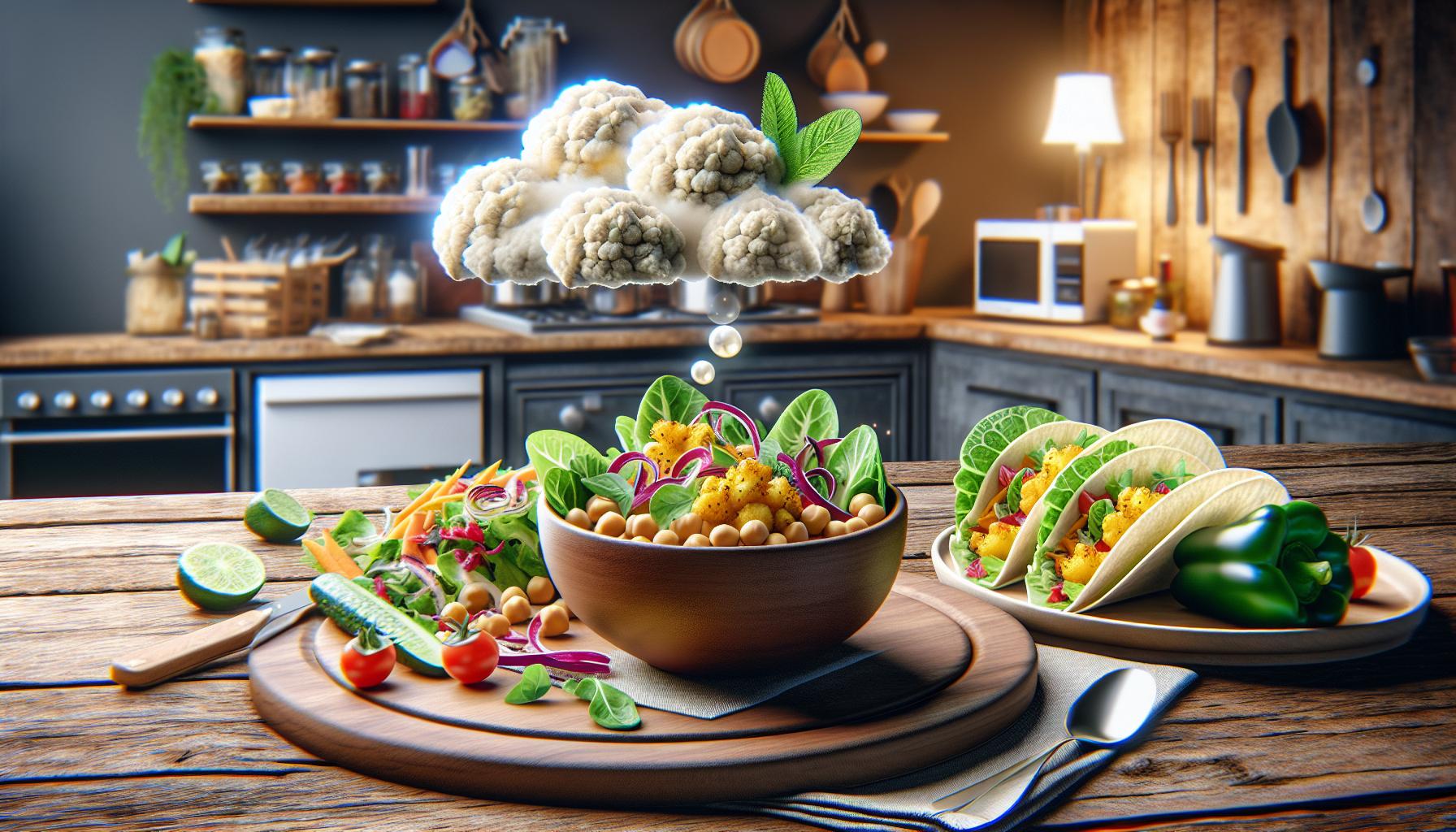In a world where avocado toast reigns supreme and rainbow bagels have stolen the spotlight, social media has transformed the way food trends emerge and evolve. It’s a feast for the eyes, where every scroll can inspire a culinary adventure or a craving for something utterly bizarre. From whipped coffee to the latest TikTok sensation, these trends not only tantalize taste buds but also ignite a frenzy of likes and shares.
As influencers and home cooks alike showcase their creations, the line between gourmet and goofy blurs, making it hard to resist jumping on the latest bandwagon. Who knew that whipped feta and pasta could become the next big thing? Join the journey through the vibrant world of social media food trends, where creativity knows no bounds and every dish tells a story worth sharing.
Social Media Food Trends
Social Media Food Trends plays a significant role in shaping contemporary food trends. Platforms like Instagram and TikTok showcase culinary creativity through visually engaging content. Popular items such as avocado toast, known for their aesthetic appeal, dominate feeds and influence restaurant menus. Whipped coffee and whipped feta pasta emerged as viral sensations, drawing attention due to their unique preparation methods.
Trends can shift rapidly, often driven by food influencers. These individuals inspire their followers with innovative recipes that blend health, taste, and appeal. Colorful dishes, like rainbow bagels, captivate audiences by combining artistic presentation with flavorful ingredients. The emphasis on visual storytelling encourages users to experiment and share their culinary adventures.
Home cooks frequently join the trend, motivated by the desire to create Instagram-worthy meals. This collaborative environment fosters a sense of community, as users engage in challenges, share tips, and celebrate each other’s creations. The generosity of chefs who share secret recipes amplifies the experience, allowing others to replicate trending dishes easily.
The lines between gourmet and quirky cuisine blur in this dynamic landscape. Social media democratizes food trends, enabling anyone to contribute to the culinary dialogue. Thus, not only does it elevate the status of various dishes, but it also fosters diverse food cultures that resonate across culinary enthusiasts. Influencers, restaurants, and home cooks continuously shape the evolving tapestry of food trends on social media.
Popular Social Media Platforms Influencing Food Trends

Social Media Food Trends significantly shapes food trends by providing platforms for sharing visually stunning culinary content. Each platform has its unique influence, driving new habits and tastes among food enthusiasts.
Instagram thrives on visual appeal, creating a gallery of food experiences. Users frequently post vibrant images of dishes, like avocado toast and rainbow bagels, making them popular among followers. Food bloggers and influencers craft artistic presentations, which prompts audience engagement. High-quality photos and hashtags boost discoverability, allowing food trends to spread rapidly. Content creators inspire followers to recreate these dishes at home. Challenges, like the #FoodChallenge, often go viral, inviting large participation. Overall, Instagram facilitates a curated food culture that emphasizes aesthetics.
TikTok
TikTok captivates a younger audience with its short, engaging videos. Users share quick recipes, showcasing unique dishes like whipped coffee and feta pasta. Trends often emerge from viral challenges and sounds, motivating home cooks to participate. Creators frequently employ catchy music and humorous commentary, keeping viewers entertained. The platform’s algorithm promotes popular videos, amplifying visibility for trending recipes. Encouraging experimentation, TikTok fosters creativity in the kitchen. Community collaboration arises as users share their twists on viral recipes, driving continuous innovation.
Twitter acts as a real-time conversation hub around food trends. Users share instantaneous reactions to new dishes and culinary events. Short, impactful tweets highlight trending food spots or innovative recipes, prompting discussions among foodies. Twitter’s fast-paced nature allows for quick updates on popular food events or festivals. Hashtags like #FoodTwitter help users connect with food-related content easily. Many chefs and brands engage directly with audiences, fostering a sense of connection. This immediacy encourages trends to surface rapidly, influencing food preferences across diverse demographics.
Emerging Food Trends

Social Media Food Trends continues to shape culinary preferences, highlighting new trends that reflect evolving tastes. These trends not only showcase innovative recipes but also promote sustainable eating habits.
Plant-Based Diets
Plant-based diets gain traction as a health-conscious choice. Influencers often share colorful, nutrient-packed meals rich in vegetables, legumes, and grains. Users embrace this lifestyle for its health benefits and environmental impact. Studies show that over 27% of Americans actively seek plant-based options. Plant-based dishes, such as chickpea salads and cauliflower tacos, appear frequently on platforms like Instagram. These meals cater to diverse dietary needs while remaining visually appealing.
Cloud Kitchens
Cloud kitchens, also known as ghost kitchens, revolutionize food delivery. These kitchens operate without a traditional storefront, focusing solely on preparing food for delivery services. Market growth for cloud kitchens stands at an impressive 12% annually. Many restaurants leverage this model to expand their reach without extensive overhead costs. Consumers enjoy access to a variety of cuisines at their fingertips, highlighting the demand for convenience. Platforms like DoorDash and Uber Eats drive this trend by making it easier for diners to discover new flavors from anywhere.
Impact Of Social Media On Food Businesses

Social Media Food Trends significantly influences food businesses by shaping marketing and customer engagement strategies. With evolving platforms, culinary entrepreneurs adapt to shifting consumer behavior and preferences.
Marketing Strategies
Visual content on Instagram creates a compelling showcase for food items. High-quality images attract attention and increase shares, enhancing brand visibility. TikTok’s short videos allow restaurants to create bite-sized promotional content that can go viral. Both platforms provide unique ways to engage customers, driving them to restaurants or online ordering services. Influencers play a crucial role, collaborating with brands to reach wider audiences. Over 70% of young adults discover new food options through social media, highlighting its importance in marketing. Creative promotions can generate buzz, encouraging users to participate and share their experiences.
Customer Engagement
Direct interaction with customers builds brand loyalty. Social Media Food Trends fosters a two-way conversation, allowing food businesses to receive feedback and respond quickly. Engaging posts invite users to share their dining experiences, with hashtags encouraging community participation. Polls and questions create opportunities for businesses to tailor offerings to customer preferences. Seasonal trends can be highlighted, keeping the menu fresh and exciting. Nearly 60% of consumers appreciate personalized interactions, which enhance their overall experience. User-generated content becomes a valuable marketing tool, showcasing authentic reviews and images that resonate with potential customers.
Social media’s influence on food trends is undeniable and continues to shape culinary landscapes. As platforms evolve they foster creativity and collaboration among food lovers and entrepreneurs alike. The rise of visually appealing dishes and engaging content has transformed how people discover and experience food.
Emerging trends reflect a growing awareness of health and sustainability while providing opportunities for diverse culinary expressions. The dynamic interplay between influencers and audiences creates a vibrant community that celebrates innovation in cooking.
As the digital age progresses food enthusiasts can expect even more exciting trends to emerge, driven by the ever-changing landscape of social media. Embracing these shifts will only enhance the culinary experience for everyone involved.

